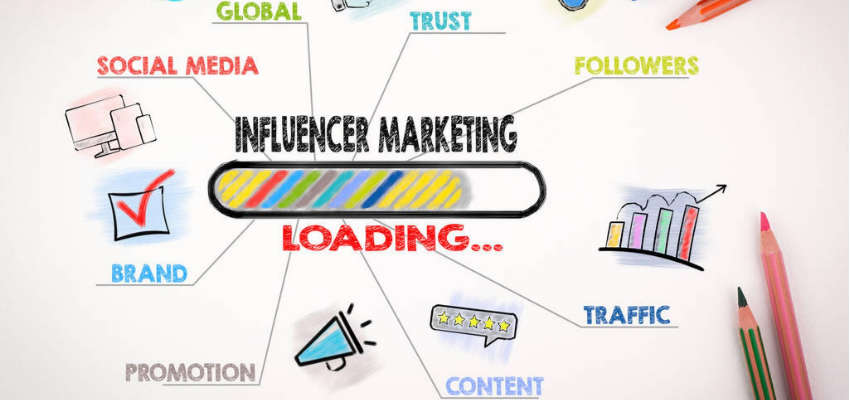Show:
A Comprehensive List of E-Commerce Marketing Strategies You Should Try
Did you know that 14% of businesses fail due to poor marketing?
In this age where market trends, consumer behavior, and technology rapidly evolve, poor adaptability and innovation will only result in failure. Thus, if you are going to join the competitive world of e-commerce, you need to have the skills and knowledge to implement effective e-commerce marketing strategies.

E-commerce marketing strategies will enable you to stay competitive and relevant to your target market. You should know how to use and navigate through various marketing strategies to establish a compelling online presence so you can help fuel its growth, unlock its potential, and enable it to scale and expand faster.
In this comprehensive guide, we will discuss various marketing strategies that businesses can consider incorporating into their playbook to thrive in the competitive world of e-commerce.
E-Commerce Marketing Strategies
Search Engine Optimization (SEO)
The cornerstone of online visibility, SEO involves fine-tuning your website to rank better in search engine results pages (SERPs). The primary goal of e-commerce SEO is to attract more organic traffic to the website, increase its online presence, and eventually drive more sales.
There are many ways you can start optimizing your website but here are the three (3) basic ways:
On-Page SEO: This involves optimizing your website’s pages. The goal here is to make your content appealing to search engines like Google, Bing, and Yahoo by crafting relevant content and incorporating certain keywords on your page’s product titles and meta titles, descriptions and meta descriptions, alt-tags, URLs, links, and headers.
Off-Page SEO: While on-page SEO is concerned with optimizing the elements of your website pages, off-page SEO on the other hand is more focused on gaining trust and building authority from other websites. This can be done basically through various link-building which you can consider to act like a ‘vote of confidence’ from other websites.
Technical SEO: Unlike off-page and on-page SEO which is focused on content and links, technical SEO is more concerned with the structure, speed, and functionality of a website. Technical SEO makes sure that the website is crawled and indexed by the search engine. This also makes sure that site visitors enjoy navigating through it because of fast loading speed times and its mobile availability.
Resources:
To learn more about SEO, here are some reputable blogs we recommend:
- Search Engine Journal: This blog website will teach you a lot about SEO and will keep you updated on the latest SEO news.
- Neil Patel: Neil Patel is known to be one of the best SEO strategists out there. His blog will teach you how to conduct SEO from his real experiences and you will surely get to apply some strategies as well.
These tools will help you in doing SEO for your website:
- Ahrefs, Moz, UberSuggest, Google Analytics, Google Search Console, Google Trends, Google Keyword Planner
Pay-Per-Click Advertising (PPC)
This strategy allows businesses to place ads in Search Engine Results, social media platforms, and across various websites and pay only when a user clicks on the ads.
PPC advertising provides your e-commerce business with instant visibility on your chosen platforms. Your ads can appear immediately at the top of search results, allowing you to reach potential customers and generate conversions right away. With this, you will gain a competitive advantage, as well as help your e-commerce business expand its reach where it matters most.
Resources:
Learn PPC advertising from expert blog websites:
- Google Ads Blog: This is Google’s official blog for Google Ads that will provide you with updates, insights, tips, techniques, and best practices.
- PPC Hero: This blog provides a wide range of topics about PPC advertising. They also have webinars and case studies that will provide you with great insights into how strategies happen through real experiences.
Here are some tools to help you get started with PPC advertising:
Social Media Marketing
With billions of users across various platforms, social media offers unparalleled reach and engagement opportunities. Social media platforms offer e-commerce businesses a global stage to showcase their products and services.

Through social media, you can have direct and real-time interactions with customers. They also offer you advanced targeting options to reach audiences with specific demographics, interests, and behaviors. And with paid campaigns, sponsored posts, and promoted content, you can expand your reach and target potential customers effectively.
Resources:
You can educate yourself about social media marketing by reading these blogs:
- Sprout Social Blog: This blog is known for its insightful content about social media management, strategies, and analytics.
- Social Media Week Blog: If you want to learn the latest trends and insights in social media, this is the best magazine for you.
- Hootsuite Blog: Find articles about social media trends, marketing tips, and platform updates in this blog.
Introducing tools that you can use for your social media marketing campaigns:
- Hootsuite, Sprout Social, and SocialBee for social media management.
- Removal.AI and Canva to remove bg from your images and create graphics for your campaigns.
Content Marketing
In e-commerce, content marketing serves to inform, educate, entertain, and inspire potential customers throughout their buyer’s journey–ultimately leading to increased brand awareness, trust, and eventually, conversions.
Content marketing is vital in driving organic and referral traffic, and helps establish your brand as an authority in your niche. As more customers seek information and value online, content marketing remains an essential tool for e-commerce success.
So, how do you apply content marketing for an e-commerce business?
- To inform and educate. Help your potential buyers learn about your business by creating diverse types of content for your blog. Write high-quality content that addresses common customer questions and provides solutions to problems, and showcases your expertise through how-to videos, insightful infographics, and case studies.
- To promote on social media. Create eye-catching visuals, informative videos, and thought-provoking content to engage with your audience in the comments.
Email Marketing
Email is still king when it comes to e-commerce.
Though it may appear archaic, sending e-mails is a tried and tested marketing strategy for e-commerce. It is a form of direct marketing wherein you are promoting your brand’s product or services through e-mails. This type of marketing is very popular and prevalent. Just look at your inbox. You have tens if not hundreds of emails from random e-commerce stores waiting for you to open them.
There are advantages and disadvantages to this type of marketing. Here are some points to ponder.
Advantages
1. This way you are creating brand awareness on a personal level since the letters are addressed to your potential customers. You are aiming to build a relationship with the receiver of your email to gain their loyalty to your brand.
2. You can engage the customer between purchases. You can send different kinds of marketing emails to stay in touch with your customers. You can send newsletters, e-magazines, subscription deals and other promotional emails that will keep your customers interested and well-informed about your products.
3. It is very cost-effective. If you are doing it yourself, sending emails will not cost much. Your major hurdle would be the mailing list. Hardwork and a little patience can help you build up that list.
Disadvantages
1. Spam. There is the possibility that your email marketing could go to waste if span filters are enabled. People do not check their spam folders and shift through their emails. They just delete it.
2. You need to have a mailing list. This is the most important since these are the addresses you’ll be sending an email to. Some companies are providing mailing lists for a fee but they can be a bit pricey. Your option could be to hire email marketing services. They will have packages that will include the list and they write the emails according to your specifications. They will send and monitor them themselves as part of their service.
Influencer Marketing
Tiktoker, YouTubers and Instagram influencers, these people are the new faces of e-commerce marketing. It would not be an exaggeration that they are now an important part of e-commerce strategies. With millions of people subscribing and following their various social media platforms, these influencers can persuade and alter your target audience’s preference.
Getting in collaboration with these influencers is to reach their network of subscribers and followers to promote your products and services. You get brand awareness and get a higher number of backlinks.

Affiliate Marketing
One of the e-commerce marketing strategies is affiliate marketing.
Affiliate marketing is a marketing strategy wherein websites would promote your products or services for a commission. This is a good strategy that will be beneficial to both parties. Since the website would earn a commission and the company would gain qualified leads and conversions.
Here are the three kinds of Affiliate Marketing.
1. Unattached Affiliate Marketing – this means that the website or affiliate doesn’t have any connection to the product or services they are promoting to the audience. They have no skills or expertise with regards to the product nor do they use them. Because of this, they do not offer advice or review of the product.
An example of this is pay-per-click or (PPC) wherein advertisers will pay the website for the number of times their ad was clicked.
2. Related Affiliate Marketing – this is the opposite of unattached affiliate marketing since the website is related to the products or services. They either belong to the same niche or the same industry. This is a more targeted approach since the traffic on these websites are the same target audience that your company is aiming for.
3. Involved Affiliate Marketing – this affiliate has a deeper connection with the product or services. They are either using the products themselves or directly involved with the making of the products. These affiliates are already known as experts in their field and are trusted sources of information.
Live Selling
This kind of marketing has been gaining popularity for e-commerce businesses. Online retailers are now marketing their products and interacting with their customers in real-time via different social media platforms.
This makes the shopping experience more authentic. They can see the product in real-time and without filters or editing. They can visualize more accurately how the product would look as if they are holding the items themselves. Customers want instant gratification and this allows them to make purchases in real-time. Conversion rates are also as high as 40%.
Remarketing and Retargeting
Almost nobody gets it the first time. And, marketing has always been a trial-and-error strategy. You need to have your e-commerce strategies to be flexible. E-commerce technology has advanced enough for you to have a clear understanding of your customers based on their purchasing behavior.
Remarketing is often done to re-engage previous customers who have already purchased or have done business with your brand before. An example is showing ads to your past customers relating to their previous purchases or showing them recommendations of products they might be interested in. You are aiming to encourage them to make another purchase. These are usually done by sending them emails.
Retargeting is slightly different because it pertains to the previous audiences that have only visited your website before. You’ll be using paid ads to re-engage people who are already in your database.
There are two types.
1. Pixel-Based – ads are displayed to any site visitor. This is very common. When you visit a website, usually a small piece of JavaScript will be attached to your browser. This is where your browser gains “cookies”. When you move on to other sites, the cookie in your browser notifies retargeting platforms to serve specific ads to that visitor.
2. List-Based – your existing mailing list or customer contacts are uploaded to the retargeting platforms (usually social media platforms like Facebook) and these platforms will send the retargeting ads. You can have customizable criteria for your ads by placing lists based on purchasing behavior or demographics.
Personalization
With a personalized marketing strategy, you aim for the customer to feel that the brand or the company’s message is just for them. It is very direct and intimate. Your customer’s specific interests, buying behavior and demographics are integral to this approach.
This is usually done with personalized emails with the customer’s name on the subject. You can also have a product presentation customized to a specific company’s brand personality. Having exit popups that offer discounts in exchange for an email address can also be a personalized marketing strategy.
Mobile Optimization
As of 2023, there are an estimated 6.92 billion smartphone users. That is 85.82% of the entire population of the world. This means from a marketing perspective, that your target audience is already placed on a platter for you.
Take advantage of the accessibility of your audience. Optimize your mobile marketing strategy by updating your website to be appealing and engaging to people who view it on their mobile phones or devices.

Make sure that your site is optimized to be used on mobile devices. Check all settings, interactive buttons, widgets, and tabs if they function as well. Image files must have the right resolutions and color accuracy to be properly displayed. You can use image editing services if you want professional results. Also, your audio and video quality should not be diminished even if viewed on other devices.
E-commerce technology is advancing at a fast speed. So, for your site to be relevant and user-friendly you should carry out mobile marketing such as app development and push notifications.
User-Generated Content (UGC)
These pertain to content created by people who are not representatives of your brand. These are usually made by customers who post on social media platforms. It can either be text, audio, or visual content.
Examples of UGC would include unboxing new products on YouTube, showing your OOTD (Outfit Of The Day), or a shopping vlog. Podcasts, testimonials, or reviews of said product or services can also be called UGC.
UDC is best at portraying authenticity. People are more likely to believe reviews of another person than a detailed presentation of a brand representative. Over 50% of millennials would trust the recommendations of their family and friends over others. And, 93% of marketers agree that consumers trust content made by other people than those made by the brand.
Social Proof
Social proof is based on the same belief as UGC. There is a need for validation of the product or services by other customers for it to appear appealing.
Usually, we believe in people who are experts in their fields. In some cases, people we assume are knowledgeable like our older relatives, friends, or even celebrities. People who have used the product are also seen as a favorable source of information.
To take advantage of these e-commerce marketing strategies, here are some recommendations.
1. Invite experts on your various social media platforms. Have them post informative content on certain topics relating to your products and services. If they are industry experts and are well-liked, their positive influence could translate to your brand as well.
2. Once in a while, your brand will be mentioned by influencers or other companies at social events. These add to your social proof, so be sure to share these mentions on your brand’s social media.
3. You can have testimonials from your customers displayed on your website and other social media platforms. This adds authenticity since the testimonials are from customers who have used your products.
Limited-Time Offers and Discounts
Customers welcome any discounts, limited-time offers, sales, deals, or special rewards from retailers. Like any customer, everyone is looking out to save money on their purchases. You are sure to get customers’ attention by offering limited-time offers and discounts.
Limited-time offers create this feeling that the products being offered are going to be sold out. This creates urgency on the part of the customer that they will be missing out on a great sale if they don’t buy right at that moment.
Discounts on the other hand offer products at a cheaper price than retail. The amount might seem insignificant, but a lot of people want a good deal.
Discounts are also used to clear out stocks, increase short-term sales and as a reward to valuable customers.
Loyalty Programs
Loyalty programs by various retailers or brands offer incentives to attract or retain customers. It could be a discount, reward, or upgrades earned through repeat purchases from the brand or company. This aims to further deepen the loyalty of the customers to the brand.
An example of this is frequent flier programs by different airlines.
Chatbots and Live Chat
Live chat enables customers to reach out to the brand with their inquiries and be able to get answers immediately. Customer engagement and support are prompt and quick which are highly appreciated by the customers.
With advancements in e-commerce technology, e-commerce marketing strategies would now include chatbots. We can already automate conversations that will help us achieve marketing goals. Lead generation and conversion are possible even without a dedicated representative of the company. Chatbots also appear appealing and can answer frequently asked questions instantaneously.

Video Marketing
There are a lot of video-sharing platforms available online. They are popular and widespread. On average, people are watching 17 hours of online videos per week. It is expected that there are 3.5 billion digital video viewers worldwide. With that kind of numbers, it is foolish not to include video in your e-commerce marketing strategies.
Here are some other reasons why you need video marketing.
1. Video is made for social media. Most content in social media are videos. They are entertaining and very engaging. They are also shareable. Accordingly, 51% of people are more likely to share videos than any other content type.
2. Videos are also the best for information and instructions. People are visual beings, Information is easily digested if shown visually. It is said that 90% of information that is processed by our brain is visual.
3. Videos are great for SEO. They generate organic traffic to your websites when visitors frequent your websites to watch videos. This also lengthens their time on your websites which in turn lowers your bounce rate.
Social Commerce
Most social media platforms are now offering features wherein you can start selling your products or services directly on the social media platform. This allows users to convert their accounts to shoppable storefronts.
It is an all-in-one deal. Your introduction to the product, marketing of the product, shopping, and customer service will be done in one platform. As a store owner, you’ll have reach to your followers. As you grow the number of your followers, you are also growing the number of your potential buyers. And, as a customer, the added convenience is very nice.
Shoppable Instagram and Facebook marketplace are examples of social commerce.
Voice Search Optimization
More and more people prefer voice assistants in their home automation. Everything from opening the lights to making their purchases online is done through voice assistants.
That is why your e-commerce marketing strategies must include voice SEO. Your websites must be optimized to have keywords and keyword phrases using voice assistants.
Here are some practices to consider for voice SEO
1. Use conversational language in your content. Try to be less technical in your terminology since most people would be more familiar with layman’s terms.
2. Long-tail keywords are more specific to the user’s intent. People tend to have longer and more specific questions than text queries. This is because we use full sentences when we speak and have more details than we type.
3. A faster page load is also important. Ideally, a page must load under two seconds before your user experience is affected. A faster loading speed will enable voice assistants to read through the information on your sites.
Conclusion
The above-mentioned e-commerce strategies have been tried and tested for some time. They have proven positive results in some e-commerce businesses and are continuously being used at this time. They aim to be accessible and relatable. The overall experience must be positive and customer engagement is always a priority.
There is no one effective strategy to be used in your business. It has and will always be a combination or an amalgamation of various strategies. You need to be adaptable and flexible in executing your strategies. There should be constant analysis and monitoring. Choose which works best for your brand. If you need to re-work your strategies, then do so. Nothing is constant but change.
About the author:
Yen Pedrajas, Removal.AI is a content writer for Removal.AI, an image background remover tool. She is a digital marketing and eCommerce enthusiast who loves to write and share new insights about marketing, eCommerce, and growth-hacking tips for startup businesses.

 Return to Previous Page
Return to Previous Page








